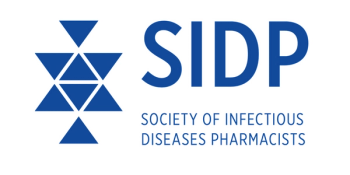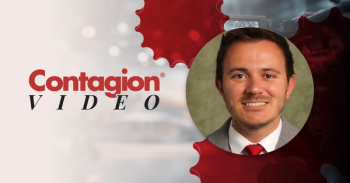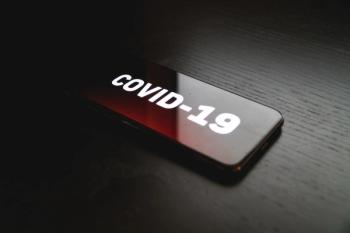
- Contagion, February-March 2024 (Vol. 09, No. 1)
- Volume 09
- Issue 01
Mixed Fungal Brain Abscess
Clinicians review a patient case including diagnosis, treatment, and follow-up.
FINAL DIAGNOSIS
Mixed fungal brain abscess identified by broadrange fungal polymerase chain reaction (PCR) as Rhizopus oryzae complex and Aspergillus spp in a person with newly diagnosed HIV who injects drugs
HISTORY OF PRESENT ILLNESS
A cisgender male aged 29 years with substance use disorder including injection drug use, as well as opioid use disorder and marginal housing, initially was admitted after being found lying in the street, covered in feces, and unresponsive. There were no next of kin or other persons to corroborate recent events. When evaluated upon arrival at the hospital, the patient’s mental status was altered and he was unable to contribute to history of present illness.
MEDICAL HISTORY
The patient’s history was notable for substance use disorder with injection drug use; infective endocarditis was listed in his chart as a previous diagnosis without further details available.
KEY MEDICATIONS
None prior to hospitalization
EPIDEMIOLOGICAL HISTORY
The patient was known to our health care system to have used drugs recently, but the exact techniques by which he used, how often, and the locations were unknown at the time of our evaluation. The patient was known to be homeless and living on the street.
PHYSICAL EXAMINATION
On admission, the patient was generally ill appearing, unkempt, and not in acute distress. He had a fever with maximum temperature of 101.3° F. His heart rate was 54 beats per minute, blood pressure was 129/93 mm Hg, respiration rate was 16 breaths per minute, and oxygen saturation level was 96% on room air. There was temporal wasting. There was no nuchal rigidity. There was no heart murmur appreciated. There were no wheezes or crackles on pulmonary examination. There were no obvious signs of ongoing injection drug use, and no evidence of skin infections was noted. On initial neurologic examination, the patient was lethargic and opened his eyes to verbal stimuli but was not following commands otherwise. He was not verbal, had symmetric facial expressions, and withdrew extremities to noxious stimuli.
STUDIES
Relevant positive laboratory findings early in the patient’s hospital course included a new positive HIV 1/2 antigen/antibody fourth-generation assay with a CD4 cell count of 226 (normal range, 410-1590 ABS cell/μL) and a viral load of 502,000 copies/ mL. A urine toxicology on admission yielded positive results for fentanyl and amphetamine. A CT of the head on day 1 of hospitalization did not show any acute intracranial abnormalities. An MRI of the brain on day 3 revealed acute to subacute left basal ganglia infarcts with mild peripheral enhancement to suggest an infectious or neoplastic process (FIGURE 1).
A CT of the head on day 4 showed findings consistent with hemorrhagic conversion of the previously noted left basal ganglia infarct. A cerebrospinal fluid analysis on day 10 had 1390 red blood cells/uL and 240 white blood cells/uL (normal range, 0-5 cells/uL) with 78% lymphocytes, 13% neutrophils, 8% macrophages, and 1% basophils. There was elevated cerebrospinal fluid protein at 128 mg/ dL (normal range, 0-45 mg/dL) and glucose of 39 mg/dL (normal range, 40-70 mg/dL). Blood culture results were negative.
Transthoracic and transesophageal echocardiography studies were negative for vegetations. Other pertinent negative laboratory results included cerebrospinal fluid Gram stain and cultures including bacterial, fungal, and acid fast; the meningoencephalitis BioFire panel; cerebrospinal fluid and serum cryptococcal antigen; cerebrospinal fluid and serum JC polyoma virus PCR; serum Toxoplasma gondii antibodies; cerebrospinal fluid Toxoplasma gondii PCR; cerebrospinal fluid cytology and flow cytometry; and Treponema pallidum antibody cascade screening assay.
CLINICAL COURSE
On initial presentation to another hospital, the patient was started on empiric coverage with ceftriaxone and vancomycin. He decompensated from a neurologic perspective and developed new right-sided weakness with worsening mental status on day 3 of hospitalization, requiring intubation and intensive unit–level care. With his acute neurologic decompensation, he was broadened to meningoencephalitis coverage with the addition of acyclovir dosed for central nervous system penetration.
At this time, an MRI of the brain and CT of the head were ordered, with both showing a new left-sided basal ganglia infarct. He also had a seizure-like episode. On repeat CT on day 8 of hospitalization, a new right-sided basal ganglia infarct was seen. The patient underwent lumbar puncture on day 10. That day, ampicillin was added to the ceftriaxone and vancomycin, and acyclovir was discontinued. Initial microbiologic work-up was unrevealing. He was able to be extubated, but his neurologic status remained poor. Although results for Toxoplasma gondii antibodies were negative and CD4 cell count was greater than 200, on day 15 of hospitalization, the patient was started on empiric toxoplasmosis treatment with clindamycin, pyrimethamine, and leucovorin. He was transferred to our quaternary care center on day 21 for consideration of brain biopsy and for seizure management. No seizures were clinically captured. The neurosurgery department requested a repeat MRI of the brain while the patient was on treatment for toxoplasmosis to assess the need for biopsy.
On day 18, antibiotics were stopped except for clindamycin, pyrimethamine, and leucovorin for toxoplasmosis. On day 22, he was switched to sulfamethoxazole-trimethoprim alone and MRI of the brain was repeated, revealing extensive signal abnormality in the left more than the right basal ganglia with associated edema and mass effect, including a lesion centered in the left basal ganglia measuring 3.4 × 2.3 cm transaxially (FIGURE 2). Multiple attempts were made to repeat MRIs while treating for presumed toxoplasmosis, but imaging was limited due to patient movement. He was intubated for a repeat MRI on day 29 of hospitalization, which showed hemorrhagic, peripherally enhancing nonpyogenic lesions in both gangliocapsular regions extending into the left cerebral peduncle/midbrain with surrounding edema. In addition to the initial 3.4 × 2.3-cm lesion previously noted, there was a 1.0 × 1.0-cm lesion described in the left cerebral peduncle on this MRI.
DIAGNOSTIC PROCEDURES AND RESULTS
Given progressive disease seen on MRI, the patient was taken for a stereotactic brain biopsy on day 31 of hospitalization. A 1-cm soft tissue section was sent to frozen pathology, which revealed fungal hyphae with a surrounding inflammatory infiltrate, for which we started the patient on empiric liposomal amphotericin B intravenously. Results from Gram stain and cultures for bacterial, fungal, and acid-fast organisms were negative. The histopathology showed fungal organisms with broad pleomorphic hyphae. On review with the pathologist, there were elements of both Aspergillus and mucormycosis present (FIGURE 3). Broad-range PCR was performed on paraffin-embedded tissue to send out to the University of Washington, and 28S ribosomal DNA amplification showed presence of 2 fungal species: Rhizopus oryzae complex and Aspergillus spp related to Aspergillus magnivesiculatus.
TREATMENT AND FOLLOW-UP
On day 31 of hospitalization, after the frozen pathology returned from the brain biopsy, the patient was started on high-dose liposomal amphotericin B at 10 mg/kg intravenously every 24 hours and toxoplasmosis treatment was discontinued. He tolerated liposomal amphotericin B treatment for 3 weeks but developed refractory hypokalemia that required a transition to isavuconazonium sulfate intravenously and later orally via a percutaneous gastrostomy tube. The neurosurgery department did not recommend abscess debridement given location within the basal ganglia and high morbidity associated with surgery.
Additionally, he was started on antiretrovirals for HIV with emtricitabine, tenofovir disoproxil fumarate, and dolutegravir after 16 days of antifungal therapy and serial follow-up MRI of the brain showed continuous decrease in size in his central nervous system lesions. One year after his initial presentation, an MRI of the brain showed a remaining 1.3 × 0.5-mm left thalamocapsular abscess and a 0.5 × 0.3-cm left cerebral peduncle abscess. He remains on isavuconazonium for at least 18 to 24 months with final duration dependent on follow-up imaging and clinical course.
DISCUSSION
This individual presented with a mixed fungal infection, centered in the basal ganglia, in the setting of injection drug use and newly diagnosed HIV/AIDS. Per meta-analysis from Brouwer et al, fungi comprise only 1% of brain abscesses and the basal ganglia accounts for approximately 3% of brain abscesses.1 Rhizopus oryzae is responsible for 70% of all cases of mucormycosis.2 In individuals who inject drugs, the organism is inoculated directly into the bloodstream, where it frequently involves the basal ganglia, which may be due to the tissue’s high iron content and Rhizopus spp spores requiring free iron to grow.3,4
A systematic review of mucormycosis in patients living with HIV indicated that individuals who inject drugs were more likely to develop isolated cerebral mucormycosis than those who do not inject drugs.5 The same review found that other copathogens were present in more than half of cases.5 In our case, presumably, the Aspergillus was injected at the same time as the Rhizopus. Aspergillus has also been described in the literature as a pathogen that has a predilection for infecting the basal ganglia.6 Fungi with branching hyphae, such as Mucor and Aspergillus, have angioinvasive qualities that can lead to luminal obstruction of small blood vessels, causing intravascular thrombosis, infarction, and further abscess development.6
For brain lesions identified on imaging of persons living with HIV (PLWH), other pathologies such as toxoplasmosis, lymphoma, and cryptococcosis should be considered.7 However, perhaps an even broader differential should be maintained in PLWH who have other risk factors such as injection drug use, and should include opportunistic fungal infections. During broad-range PCR testing, the genes are amplified and sequenced, and the resulting data are subsequently compared against established databases to ascertain the identity of an organism.8 The specific targets used for comparison vary depending on the type of organism under analysis.8 Broad-range PCR testing can be particularly useful when cultures or pathology results are negative or inconclusive but suspicion of an infection is high. It can also be helpful if the histopathology identifies an unexpected result and further evidence is needed to support a diagnosis and, ultimately, help guide a treatment plan.9 Fungi contain highly conserved ribosomal subunits, including 18S and 28S.10,11
Between coding regions of 18S and 28S ribosomal RNA, there are internal transcribed spacer regions that contain variability among fungal species and can be amplified by PCR to identify specific fungal species.10-12 For our patient, broad-range PCR testing proved critical in establishing a diagnosis; 2 fungal morphologies were seen on histopathology, biopsy culture results were negative, and antimicrobial therapy was the mainstay of management with no further surgical intervention planned given a high-risk location within the basal ganglia.
References
- Brouwer MC, Coutinho JM, van de Beek D. Clinical characteristics and outcome of brain abscess: systematic review and meta-analysis. Neurology. 2014;82(9):806-813. doi:10.1212/WNL.0000000000000172
- Ibrahim AS, Spellberg B, Walsh TJ, Kontoyiannis DP. Pathogenesis of mucormycosis. Clin Infect Dis. 2012;54 suppl 1(suppl 1):S16-S22. doi:10.1093/cid/cir865
- Stave GM, Heimberger T, Kerkering TM. Zygomycosis of the basal ganglia in intravenous drug users. Am J Med. 1989;86(1):115-117. doi:10.1016/0002-9343(89)90242-8
- Meyerowitz EA, Sanchez S, Mansour MK, Triant VA, Goldberg MB. Isolated cerebral mucormycosis in immunocompetent adults who inject drugs: case reports and systematic review of the literature. Open Forum Infect Dis. 2020;7(12):ofaa552. doi:10.1093/ofid/ofaa552
- Moreira J, Varon A, Galhardo MC, et al. The burden of mucormycosis in HIV-infected patients: a systematic review. J Infect. 2016;73(3):181-188. doi:10.1016/j.jinf.2016.06.013
- Hadley C, Haneef Mohamed AW, Singhal A. Central nervous system fungal infection in a young male with a history of intravenous drug abuse and hepatitis C. Radiol Case Rep. 2017;12(3):590-596. doi:10.1016/j.radcr.2017.03.016
- Tan IL, Smith BR, von Geldern G, Mateen FJ, McArthur JC. HIV-associated opportunistic infections of the CNS. Lancet Neurol. 2012;11(7):605-617. doi:10.1016/S1474-4422(12)70098-4
- Naureckas Li C, Nakamura MM. Utility of broad-range PCR sequencing for infectious diseases clinical decision-making: a pediatric center experience. J Clin Microbiol. 2022;60(5):e0243721. doi:10.1128/jcm.02437-21
- Lieberman JA, Bryan A, Mays JA, et al. High clinical impact of broad-range fungal PCR in suspected fungal sinusitis. J Clin Microbiol. 2021;59(11):e0095521. doi:10.1128/JCM.00955-21
- Chen YC, Eisner JD, Kattar MM, et al. Identification of medically important yeasts using PCR-based detection of DNA sequence polymorphisms in the internal transcribed spacer 2 region of the rRNA genes. J Clin Microbiol. 2000;38(6):2302-2310. doi:10.1128/JCM.38.6.2302-2310.2000
- Kubiak J, Morgan A, Kirmaier A, Arnaout R, Riedel S. Universal PCR for bacteria, mycobacteria, and fungi: a 10-year retrospective review of clinical indications and patient outcomes. J Clin Microbiol. 2023;61(12):e0095223. doi:10.1128/jcm.00952-23
- Xu J. Fungal DNA barcoding. Genome. 2016;59(11):913-932. doi:10.1139/gen-2016-0046
Articles in this issue
over 1 year ago
Hepatitis C Virus: Task Shifting and Screeningover 1 year ago
Rising Dengue Fever Cases Carry One Health Implicationsover 1 year ago
Navigating a New Road Map for Infant RSV Preventionover 1 year ago
A Chance to Improve Hepatitis C Care for PWIDNewsletter
Stay ahead of emerging infectious disease threats with expert insights and breaking research. Subscribe now to get updates delivered straight to your inbox.































































































































































































































































































